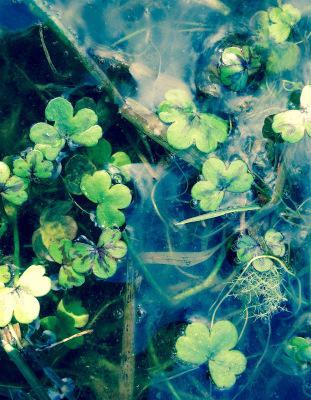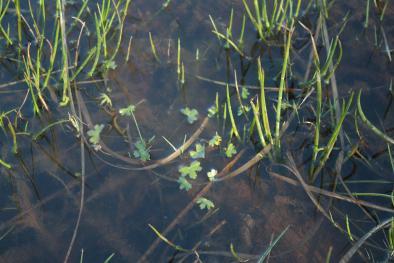In the world of plant-fancying, it’s often the showier plants that take the glory. However, I have a real fondness for smaller plants that are less distinctive at first glance, but which, on a closer look, are really beautiful.
Last week, I was walking a very squelchy, at times very splashy footpath through a small local nature reserve close to where I live in West Cornwall. I was delighted to find thousands of small Crowfoot plants, strewn out along the path, clinging to the sticky mud and floating in the puddles.
Now, the members of the Crowfoot sub-genus (which belong to the Buttercup – Ranunculus – family) are notoriously tricky to tell apart. The BSBI has an entire (and excellent) Plant Crib dedicated to their identification. It contains ominous phrases such as “Most species…are impossible to identify in the vegetative state” and mentions the dreaded “hybridisation” word. It is my firm belief that plants should not be allowed to hybridise – it’s hard enough trying to ID them as it is! Ah, well.

The Crowfoot I’m most familiar with is Three-lobed Crowfoot (R. tripartitus). This is much rarer than its Round-leaved cousin, and is largely restricted to Wales and sites in South and West England. Here in Cornwall, The Lizard is one of the best places to go looking for it, and I blogged about it recently in the context of the Grochall Track, a good place to find it. The tracks from Predannack down to Kynance, as well as Windmill Farm, are also fine Three-lobed Crowfoot sites.

If you compare Round-leaved Crowfoot in the above image with the photograph of Three-lobed Crowfoot to the left, you can see that the former is much ‘chunkier’ than the delicate R. tripartitus (the images are at different scales, but you can still see the differences in leaf shape).
I’m not at all sure, mind you, that the BSBI would approve of using chunkiness as an identifying feature. There doesn’t seem to be any reference to it in the Plant Crib.

